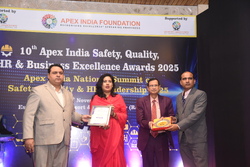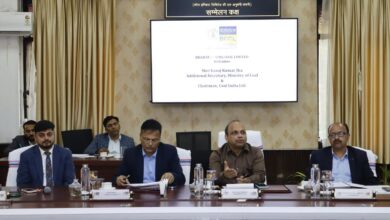COP29 Known As “Finance COP,” Starts In Baku Today
What does it mean to India and the world, decodes Seema Javed, noted environmentalist & a communications professional in the field of climate and energy

The annual UN climate conference, COP29, started today in Baku, Azerbaijan. It will continue till November 22, bringing together negotiators from nearly 200 countries to advance the Paris Agreement’s goals of limiting global temperature rise, strengthening climate resilience, and mobilizing support for developing nations.
India on climate finance : This year’s summit is being termed the “Finance COP,” and it will focus heavily on securing a new climate finance target for countries most vulnerable to climate impacts. COP29 may well be among the most consequential climate summits since the Paris Agreement. At Baku, India will seek an NCQG that is far ahead of the outdated $100 billion annual target set in 2009. Since the discussions are set to address the New Collective Quantified Goal (NCQG) for climate finance, a framework that aims to replace the annual commitment of $100 billion by 2020 made by developed countries in 2009 – a target met only once, in 2022.
India is stating that developed countries need to provide at least $1 trillion of climate finance per year. Climate finance goal is increasingly critical; the longer developed countries fail to meet existing targets, the larger the future financial burden will be. India has so far played a key role in shaping global climate finance frameworks to address the urgent funding needed for both mitigation and adaptation efforts. The climate finance gap, however, continues to widen each year.
-The African Group proposing a goal of $1.3 trillion per year for developing countries, with a stronger focus on the quality of finance.
- The Arab Group stating that the goal should be of USD 1.1 trillion from developed to developing countries not including arrears for the 100 billion.
NDC & Finance : According to the Second Needs Determination Report by the UNFCCC Standing Committee on Finance (SCF), developing nations will need between as much as $6.852 trillion cumulatively until 2030 to achieve their stated Nationally Determined Contributions (NDCs). Global South nations citing estimates of $5.9 trillion by 2030 needed to implement Nationally Determined Contributions (NDCs) alone.
Energy Transition & Finance Global South nations estimates $4 trillion annually for clean energy technology. Energy Transition is at the core of India’s energy journey and is central to all its major energy plans. It needs annual investments worth $250 billion till 2047 to prepare India’s energy systems for Net-Zero pathways, according to Niti Aayog. India’s Economic Survey 2023-24 indicates that India will need approximately $2.5 trillion by 2030 to fulfil its commitments under the Paris Agreement.
Loss And Damage Fund(LDF): The country’s stance going into COP29 and G20 Brazil will continue to focus on equitable finance for adaptation and mitigation, with a clear emphasis on accountability from developed nations. Loss and Damage Fund will help developing countries that are vulnerable to climate change to recover from the economic and non-economic losses and damages caused by climate change.
The fund was agreed upon at COP27 in Sharm El Sheikh, Egypt, and became operational after COP28. The United Arab Emirates (UAE) has announced its commitment of USD 100 million to the LDF in COP28. The United Kingdom committed GBP 40 million for the Fund and GBP 20 million for other funding arrangements, Japan committed USD 10 million, the United States of America committed USD 17.5 million and the European Union (including Germany) committed 225 million euros in COP 28.
India faces significant adaptation finance needs, with estimates suggesting six states alone require around INR 444.7 billion or $5.5 billion annually from 2021 to 2030, implying a national requirement potentially in the tens of billions of dollars each year. Yet, limited state budgets, high debt burdens, and economic challenges restrict the funding available. To address this gap, India has sought $1 trillion annually starting in 2025 for global climate finance, emphasizing the need for substantial international support to build resilience against escalating climate impacts.
The writer of this article is Dr. Seema Javed, an environmentalist & a communications professional in the field of climate and energy




